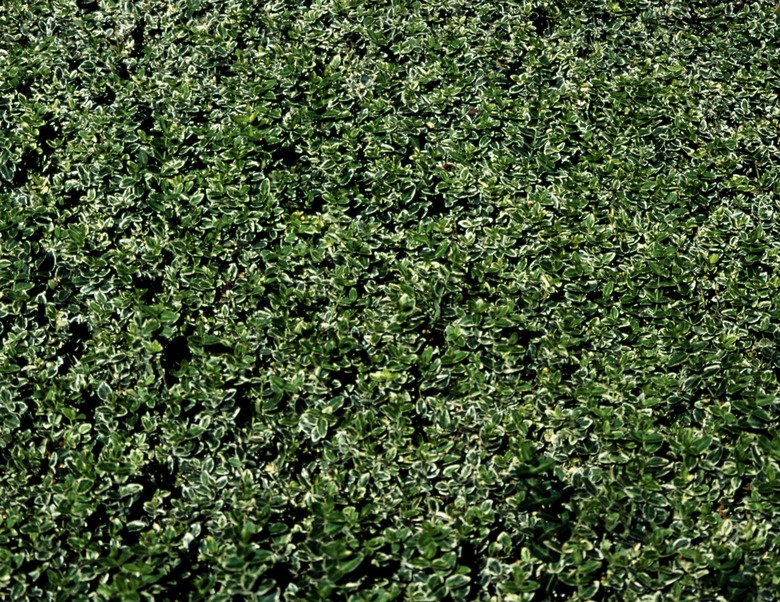How Deep Are Laurel Hedge Roots
We may receive a commission on purchases made from links.
Laurels are evergreen broadleaf shrubs or small trees. They are extremely hardy and adaptable to a wide variety of soils. Laurels grow quickly and are often used as borders or hedges. Their versatility makes them suitable for most light situations, and they fill in quickly making a dense, living fence. Laurel hedges need constant maintenance keeping their growth in check and managing their shape. Removing the hedge can be tricky because some plants grow deep taproots and have wide, thick root systems.
Tip
Laurel roots can grow 3 or 4 feet long, but their length depends on species, soil conditions and water availability.
Many Laurel Species
Many Laurel Species
There are more than 45 genera and 1,000 species in the Lauraceae family to which laurel plants belong. Laurel trees are common in home landscapes. They are woody plants with deep-green, glossy leaves. Some species have aromatic oils in the foliage. A laurel hedge's roots become intertwined and make the border even stronger than a single plant.
The roots are woody and have small fine hairs on them for breaking up soil and collecting water and nutrients. When cut, the plant re-sprouts from the roots. Some species root when a stem touches the ground.
Root Size and Soil Type
Root Size and Soil Type
The actual length of a laurel's roots depends on the soil type where it's situated. The plant is so adaptable that it grows in rich loam, sandy loam, clay or hardpan. In softer soils, the plant has no trouble spreading downward and has longer roots. In hard soils, the roots spread out where there is least resistance, forming a more wide and fibrous root system.
Size and Growing Conditions
Size and Growing Conditions
The amount of available water has a large effect on the length of the roots. A plant's roots gather water and nutrients from the soil. In areas with poor fertility and deep water tables, the laurel extends its roots downward. This is a natural response as it seeks its life sources. The roots can go as deep as the main utility lines and pipes, which is typically 3 to 4 feet, may even seek moisture in sewage or drain pipes that cross their path. That's why it's important, when planting laurel, to check on the utility locations and keep a healthy 10-foot distance between drain pipes and laurel bushes.
Conversely, soggy soils cause the plant's roots to dive downward and form a taproot as an anchor. If the plant is in soils with average moisture and plenty of nutrients, it sends out a medium-size root system that spreads out more than it dives deep.
Laurel Can Regrow
Laurel Can Regrow
The average bush produces roots that are at least 2 feet down once mature. When a plant produces a taproot, the thick root extends many more feet into the earth. The majority of plant roots are in the top 12 inches of soil, where the feeder roots and fibrous material are located.
Most plants develop a taproot in response to climate or site and are difficult to transplant or relocate after a year of establishment, so it's important to plan the laurel hedge carefully before installation. Also, if you have to dig one up, prepare to dig deeply to get all the roots, or like a weed, the laurel bush will re-emerge.
